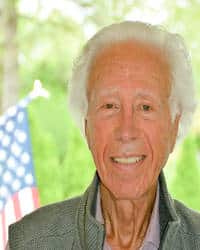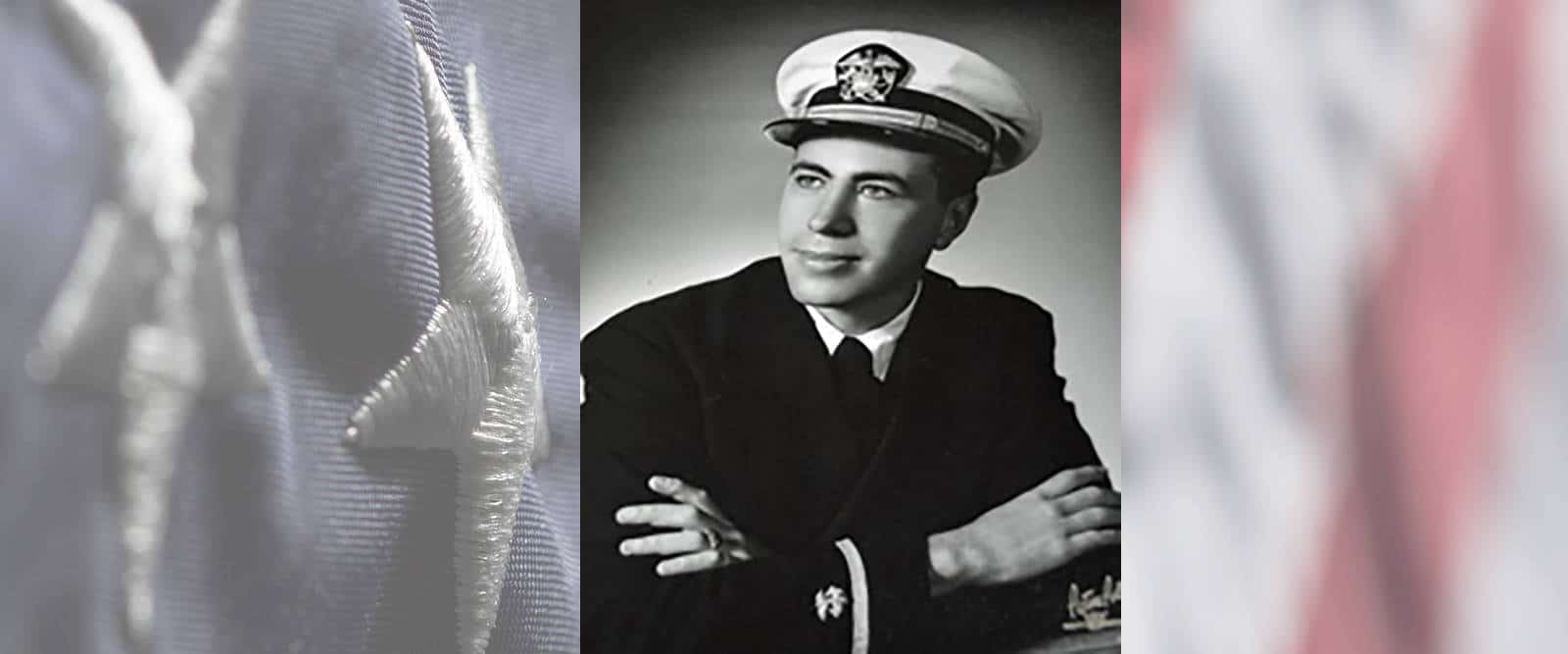U.S. Public Health Service Korean War Glencoe, IL Flight date: 06/07/17
By Jack Walsh, Honor Flight Chicago Veteran Interview Volunteer
Seymour Gottlieb decided when he was very young that he had a lot to contribute, and has lived his life in giving all he could to his country and to the world. He graduated in June 1950 from the University of Illinois with a degree in microbiology and was soon employed. But with the outbreak of the Korean War, he realized he would soon be drafted. And, as Seymour says, “I knew I had more to contribute as a microbiologist than could happen through the draft, so I decided to take matters into my own hands.”
He followed the advice of some friends and on his own, flew to Washington, D.C. He went knocking on doors in the Pentagon. (In those days, you could just walk into the building – no passes needed!) “I knocked on the doors of the Army and the Air Force, and was interviewed. The Air Force said they wanted me and would put me in Texas. I was filling out the paperwork for the Air Force when they asked me what military training I had in college (ROTC), and I said ‘none.’ They told me I’d have to go through Air Force officer training, and there was no guarantee I would get in, so I didn’t sign up.”
Continuing his pursuit, he then went over to the U.S. Public Health Service, (part of Health, Education and Welfare at the time) and got an interview. “It took a while, but they sent me to Savannah GA for another interview, and I was commissioned as a 2nd Lieutenant in the Public Health Service Commissioned Corps.” In time of emergency or national disaster, the President of the United States can militarize the PHS Commissioned Corps, one of the seven uniformed services of the United States, at which time they are considered part of our military forces. USPHS hired three people that year for its group: two engineers, and one microbiologist (Seymour). “I found out later that I had been investigated – our neighbors called my parents and told them people had been asking about me!”

Seymour apparently needed a ‘Secret’ security clearance. In April 1951, Seymour started to work immediately. He received no officer training, either before his commission or after. His first title was Junior Assistant Sanitary Engineer. “The unique thing that I did in the Korean War, I was the first microbiologist to work in the germ warfare defense end of biological warfare. There was a group up at Fort Detrick in Maryland that was developing the organisms making them more potent as offensive weapons. Our group was totally for defense.”
“We were the first group to work on defending us – we had to build everything, including all of our lab equipment and the lab procedures, as well as the devices to trap the air (called ‘samplers’). Someone could walk into any building – including the Pentagon – or onto an airplane and could spray an aerosol can of toxic organisms. Our job was to figure out how to identify when it happened, what it was, and how to respond to the organisms, including decontamination protocols and tests available as well as our newly designed devices to monitor test microorganisms.”
“The engineers I was attached to would draw up these designs for samplers, and test them in the chambers that we had built to see what was the most efficient. We developed devices that could run 24 hours a day and sample the air, and are the basis for devices still in use today. We sometimes tested devices on rooftops in Savannah. We had the research station, and we even had airplanes where we tested and sprayed organisms (at the time not published) to test our devices.”
“I was working Day One in April 1951 (I was 22 – a young guy!), and we had devices developed by 1952. Some of the research was released in scientific monographs and was used in the development of filters and filtration equipment. The information had commercial value.”
A few of the people Seymour worked with later transferred to NASA to develop devices used in the early space program to test the air in space.
“The work we did was so significant that even Life magazine came and photographed some of our work, and published an article in 1952 about germ warfare and what we were doing. It was interesting that the article got into the hands of some people behind the Iron Curtain. East Germany published a story of how the US was spraying poisons, and killing our own people! Life magazine was impressed with how wide their readership was.”
“I believe the United States was doing much to protect us. The things we developed, such as special filters, were used in a lot of industries, such as medicine, scientific research, food processing, etc. The work we did was the foundation for the biological defense we have today. It is so easy to disseminate the organisms, via a crop sprayer, a plane, any aerosol capability, that I believe our work is so critical.”
From April 1951 to May 1954, Seymour was in Savannah, as a 1st Lieutenant, USPHS Commissioned Corps. In that short time, a lot was accomplished. The basis for a whole field of scientific research and development was established.
Eventually, he decided he wanted to go back and get his doctorate in microbiology at U of I. But he met some people who convinced him to consider dentistry. He wound up at the University of Illinois Dental School, but also served on the research staff. His experience at Outland Island proved very valuable. He was able to do research in wound healing, receiving a research grant in the histology department — as a freshman! Even after he got his doctorate, he stayed on the research staff, working in areas such as wound healing and tissue regeneration.
In August 1958, Seymour married his wife Iris and had two daughters. As his family started to grow, Seymour decided he needed to start his own dental practice. This would allow him a much better income, but more important it would provide the independence and self-reliance he craved. He also could continue to do some of the research work that he loved. He became a well-known expert in preventive dentistry, and spoke on the topic around the world.
Seymour has continued his life of service, including three summers with his family on a kibbutz in Israel doing dentistry, and working with Holocaust victims. He still volunteers doing dental work at shelters in Chicago, and has been on the Board of Health in Skokie. Today, he and Iris live in Glencoe. Seymour is busier than ever volunteering and reading.
Seymour is proud of his service, and says “I was so young when I started. No one else is left to tell the story of the earliest steps of developing methods for detecting bioterrorism, especially since that threat remains today in the world. The work I did changed the direction of the knowledge in this field, and it was part of the start of our fight against bioterrorism. It also changed the direction of my life, to give me the tools and knowledge as a young guy, and to allow me to continue in research, even though in a kindred field.”
Seymour Gottlieb, thank you for serving our country and working to protect us from unknown and serious dangers. Enjoy your well-deserved day of honor and Welcome home!



